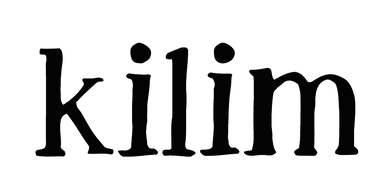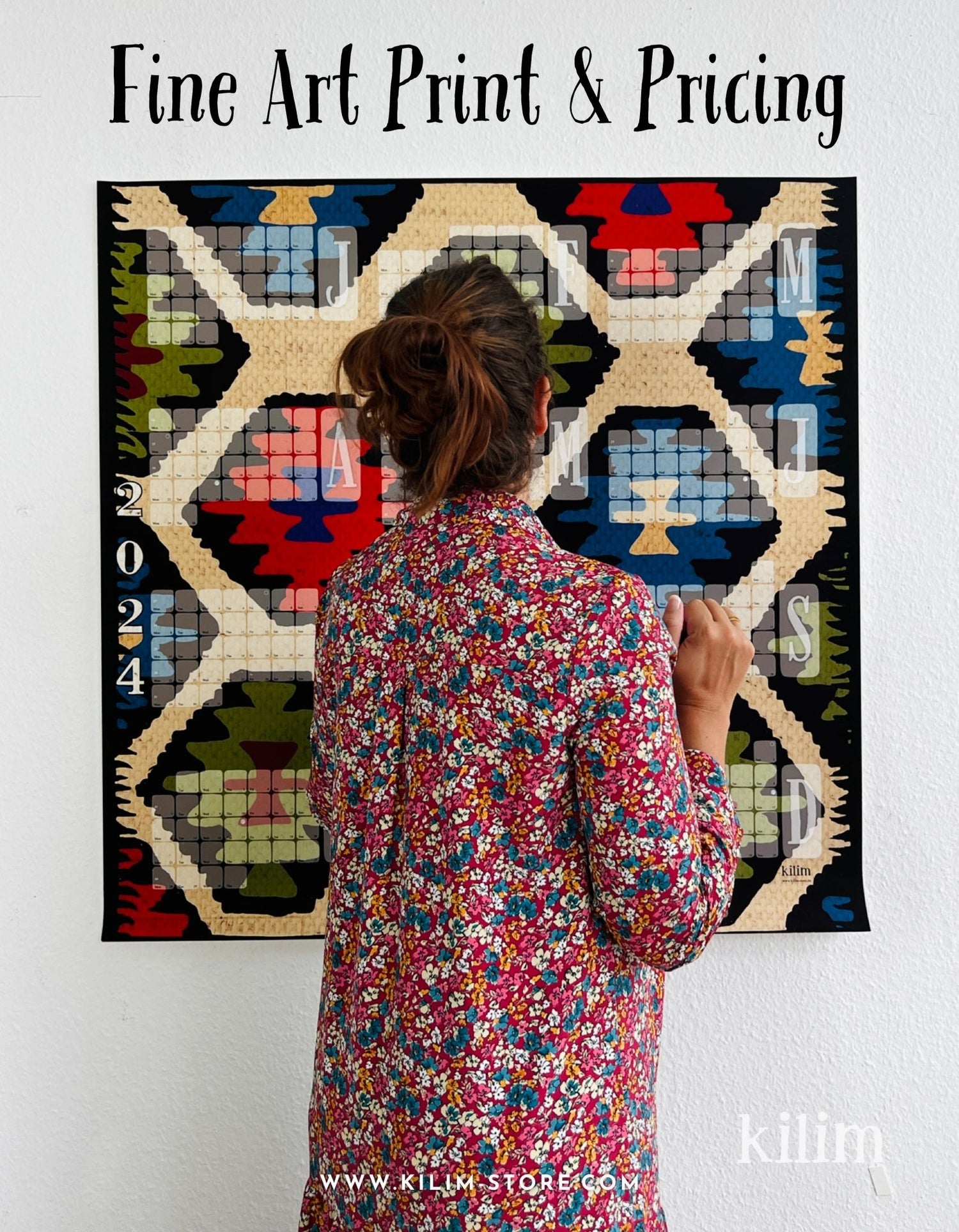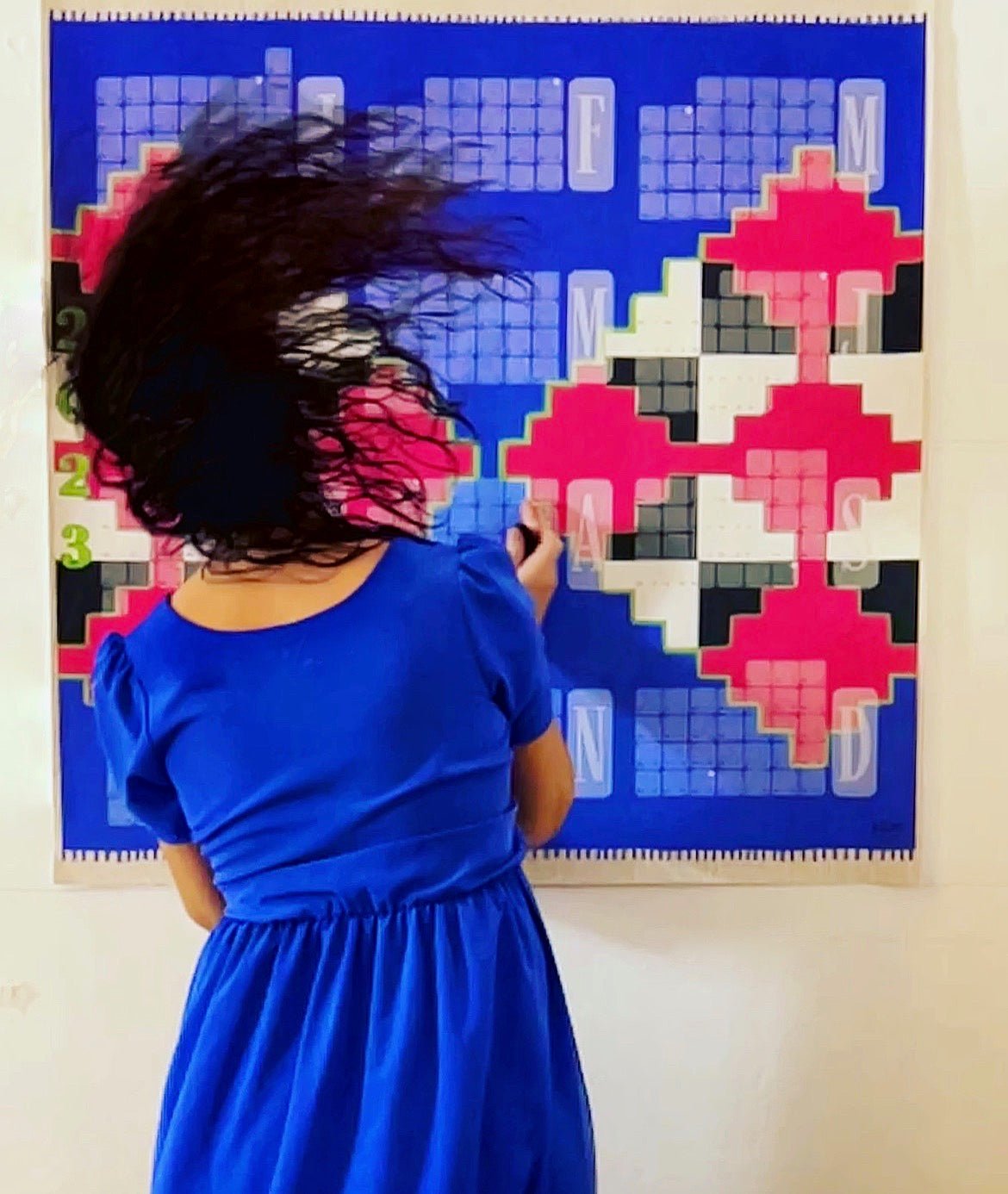The Calendar, Fine Art Print and Pricing
Kilim stands for quality, sustainability, originality and transparency. Today I would like to give you a little insight into our pricing. First, the most important question.
What exactly is a fine art print?
A fine art print is a special printing process (fine art print) on high-quality paper. The fine art print allows painters, photographers and all other artists to reproduce their works true to the original, in the best possible quality, without losing the high resolution and color fidelity. It delivers razor-sharp images, bright colors, detail and a high durability and lightfastness of the prints.
The Glicée print: Premium printing process in museum quality
A fine art printing process that is used primarily by museums and galleries is the so-called glicée printing. It is a special raster-free inkjet printing process in which the long-lasting, pigment-based ink (so-called "archival inks") is sprayed onto the corresponding medium (glicée; French: to spray, to squirt). This process is therefore particularly suitable for demanding printing media such as handmade and watercolor paper, artist canvas and also silk. The giclée printer can use up to 12 individual colors. The result, or better said, experience: a high level of nuance and color richness, contrast and depth. Through the spraying method, this printing process opens up a true oasis for paper preferences.
The paper: The decisive factor for fine art prints
Of course, it's not just the print itself. It's the interaction with the paper that makes fine art printing so special. Each paper has a unique surface (density, thickness, surface treatment, brightness, weight) that allows the print result to vary. One factor is how much ink the respective surface can absorb. Structured, uncoated papers or those with a high cotton content, for example, can absorb more ink than coated ones, thus ensuring greater color intensity and depth.
My journey to find the right paper was an adventure. I spent a year stroking, smelling and printing my way through the paper universe. Each paper changed colors and nuances, as if I was looking at a different print. It had to be pleasant to stroke, soft to the touch, leave no marks, be sustainable and let the colors and patterns shine. In addition, it had to be pure white and available in large format. Our apartment consisted of a sea of rolls, canvases, paper samples and test prints until I found the one that met all the requirements. It was a journey to the senses, an adventure, just as every print and every calendar is an adventure. A story. An attitude to life.
The Kilim Calendar: Art and Functionality Combined
It all started with my own desire for a wall calendar that loves the year. That understands that time is a valuable commodity. That a day, a week, a month is not just a stubborn, unimaginative sequence of events and appointments. So in my opinion it had to be big, extremely eye-catching and colorful (just like life itself) and make room, not just for any appointment, but for inspiration, visions, thoughts. For me, aesthetics was never just a beautiful surface, but a door through which I can immerse myself in what I do and how I do it, whether I like it or not like it at all. So the aesthetics of my organizational tool had to be central in addition to the practical aspect. My idea was to give the calendar two functions: near the calendar, and as it moved further away, just a colorful piece of tapestry-style jewelry.
When I had the first drafts printed on simple poster paper, I was downright shocked by the result: the colors were matte, the calendar above them dominated. The pattern and calendar interfered with each other because the lack of depth meant they hardly stood out from each other. The paper didn't feel good to the touch, the pen smudged (on glossy paper), but was too strong on matte paper. After a veritable odyssey, I finally printed on fine art paper. And what can I say: There it was: a calendar and art print in one, which turns every day into an experience with its bright colors, offering a new perspective. Which set the pattern and calendar apart with its razor-sharp depth and mastered both functions equally. But at what price?
pricing
When pricing the Kilim calendar, I was faced with a challenge: to fully realize the quality and vision I had for this product without compromising on materials and manufacturing. If I were to fully include the actual costs of the high-quality materials (a fine art print starts at 50 euros per square meter), the specialized printing process, the design, packaging and shipping in the price, the final price would be far above my price decision. So I was faced with the question: who am I making these calendars for? Why am I doing it? Is it worth it? Worth continuing this journey and putting art and inspiration above profit? It should enrich and inspire everyone's everyday life, be able to decorate many living rooms and offices. So what was my task? To produce large quantities in order to reduce costs, to reduce the quality or to reduce the costs as much as possible without compromising on quality at the risk of no one buying a calendar starting at 89.00 euros. I decided to take the risk and with it this: to let you feel the value of this product designed with quality and dedication, a small approximation of the immeasurable value of time or a day or a whole year.
A few months later, my carpet (calendar) was already flying across the Atlantic. I received photos from Paris, Sydney, Portugal. Photos from living rooms, hallways, offices, children's rooms and even a bathroom. I can't even describe how much this fulfills me and makes me believe that love and devotion to a person, a cause and also to a product always wins.
There is good news for anyone who wants to spend more time with their Kilim calendar: the Evergreen Edition will be available in May. You can hang it up for years, as a perpetual calendar, birthday or tradition calendar, or you can decide at some point on a year in which you want to use it, give it away or write on it.
Conclusion: The Kilim Calendar – Art and Function in One
The Kilim calendar is more than just a wall calendar - it is a work of art that brings color and structure into your life. The use of fine art prints and high-quality giclée printing makes it a visual highlight that is both functional and aesthetically pleasing. If you are looking for a special calendar that will beautify your home and organize your everyday life at the same time, the Kilim calendar is the perfect choice. Click here to see my current fine art calendar collection: https://kilim-store.de/collections/all
FAQs: Frequently Asked Questions
What is a fine art print?
A fine art print is a high-quality printing process that makes it possible to reproduce works of art faithfully in brilliant colors and high resolution.
Why is giclée printing so special?
Giclée printing uses archival, pigment-based inks and fine inkjet technology that is particularly durable and color-accurate - ideal for art calendars and art prints.
How long does a fine art print last?
Fine art prints, especially giclée prints, are known for their durability and, if properly cared for, can last for many decades without color loss.
Why are fine art prints more expensive than regular prints?
The cost of fine art prints comes from the use of high-quality materials such as pigment-based inks and specialized printing processes that ensure outstanding color accuracy and longevity.
How do I choose the right paper for fine art prints?
The right paper depends on the texture and color result you want. For example, textured papers offer high color intensity and depth, while smoother papers bring out sharper details.

Left: Calendar on poster paper, right: Fine-Art print


